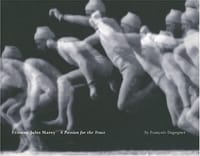Etienne-Jules Marey (1830-1904), the brilliant French physiologist, developed photographic techniques for the study of animal locomotion that directly influenced the invention of cinematography. His work and the images he created are among the very sources of modernity, yet his own history and background remain obscure. Marey's strange story emerges in this fascinating account of a voyage of scientific and aesthetic study that would have reverberations in many aspects of modern culture. Dagognet, a philosopher, focuses on the meaning of Marey's work, on being able to capture a trace of the usually invisible world of motion, for aesthetics and science.<br /> <br /> Marey succeeded Claude Bernard (whose passion for recording opened the frontiers of cinema and modern art) at the Academy of Sciences. There his central preoccupation led Marey to search out increasingly accurate and sensitive methods for "fixing" motion so that its details could be studied. Around 1880 and after a meeting with Muybridge, it became clear that photography, the possibility of a snapshot, would furnish Marey with the ideal instrument for his studies. Not only the gallop of a horse but also the flight of bird, the quivering of insect wings, the bounce of a ball, the slightest of turbulences - all could all be made to stand still: from the invisible came the image.<br /> <br /> François Dagognet teaches epistemology at the University of Lyon. Among his previous publications are Philosophie de l'image and Rematérialiser. Zone 6: Incorporations includes his essay "Toward a Biopsychiatry."

